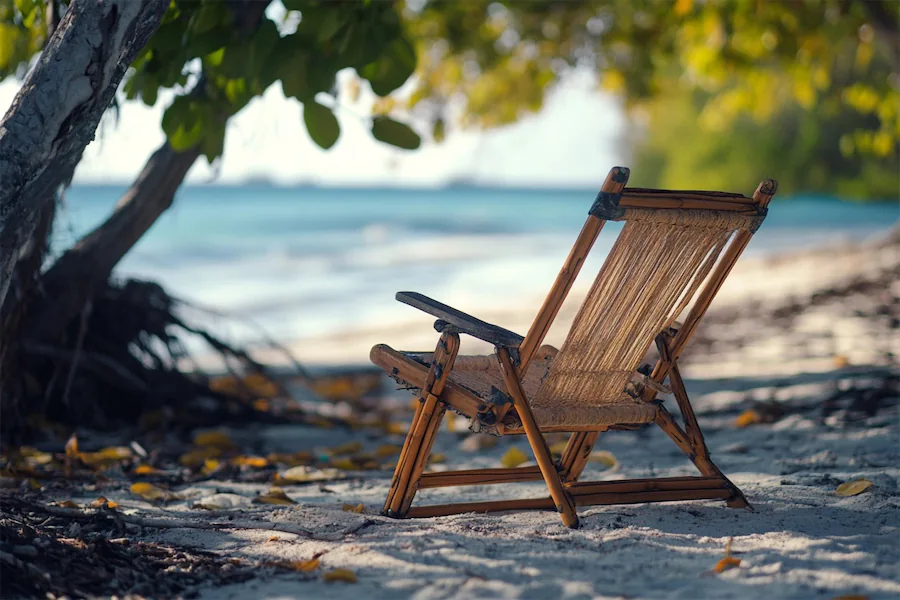Beach chairs are essential companions for seaside relaxation, offering comfort and convenience to beachgoers worldwide. This article delves into their history, key features, applications, considerations for selection, and concludes with their significance in enhancing beach experiences.
History and Origins of Beach Chairs
The concept of portable seating dates back to ancient civilizations, with early folding chairs used in Egypt, Greece, and Rome. These chairs symbolized power and were often elaborately designed. The modern beach chair, however, emerged post-World War II, coinciding with a rise in outdoor leisure activities. During this period, Americans began purchasing properties with large lawns and backyards, leading to an increased demand for outdoor furniture. The folding aluminum beach chair, a staple of beach outings, was invented by World War II combat pilot Fredric Arnold.
In Europe, particularly in Germany, the “Strandkorb” or wicker beach chair was invented in 1882 by Wilhelm Bartelmann. Designed to provide shelter from wind and sun, it became a popular fixture along the Baltic Sea coast.
Key Features of Beach Chairs
- Portability: Designed to be lightweight and foldable, allowing for easy transportation and storage.
- Durability: Constructed from materials like aluminum, wood, or plastic, often with weather-resistant fabrics to withstand sun, sand, and moisture.
- Comfort: Features such as adjustable recline positions, armrests, and cushioning enhance user comfort.
- Additional Amenities: Modern beach chairs may include built-in cup holders, storage pockets, canopies for shade, and even insulated coolers.
Applications of Beach Chairs
- Recreational Use: Ideal for beach outings, providing a comfortable place to sit, sunbathe, or read by the shore.
- Outdoor Events: Suitable for picnics, concerts, camping trips, and other outdoor gatherings where portable seating is beneficial.
- Commercial Settings: Utilized by resorts, hotels, and beachside establishments to offer guests comfortable seating options.
Considerations When Choosing a Beach Chair
- Material: Opt for chairs made with rust-resistant frames and quick-drying, UV-resistant fabrics to ensure longevity.
- Weight and Size: Consider the chair’s weight for portability and ensure it supports the user’s weight comfortably.
- Ease of Use: Look for chairs that are easy to fold, unfold, and carry, with features like shoulder straps or carrying bags.
- Comfort Features: Evaluate the presence of adjustable recline positions, adequate back support, and additional amenities like cup holders or canopies.
- Stability: Ensure the chair has a sturdy design to prevent tipping or sinking into the sand.
Conclusion
Beach chairs have evolved from simple folding seats to versatile and comfortable accessories integral to outdoor leisure. Their design reflects a blend of functionality and comfort, catering to the diverse needs of beachgoers and outdoor enthusiasts. When selecting a beach chair, consider factors such as material durability, portability, comfort features, and intended use to enhance your outdoor relaxation experience.
